Exhibition
1 Mingei is Always Inside My Heart
Inspired by Serizawa Keisuke, Yunoki embarked on a career in dyeing, learning katazome and tackling chūsen, a particular katazome dyeing technique. After much trial and error, he successfully applied the chūsen dyeing technique—originally used to dye the narrow fabric for items such as yukata (light cotton robes) and tenugui (light cotton towels)—to broadloom fabric, expanding his range into dyed products that suited Japan’s increasingly Westernized lifestyle.
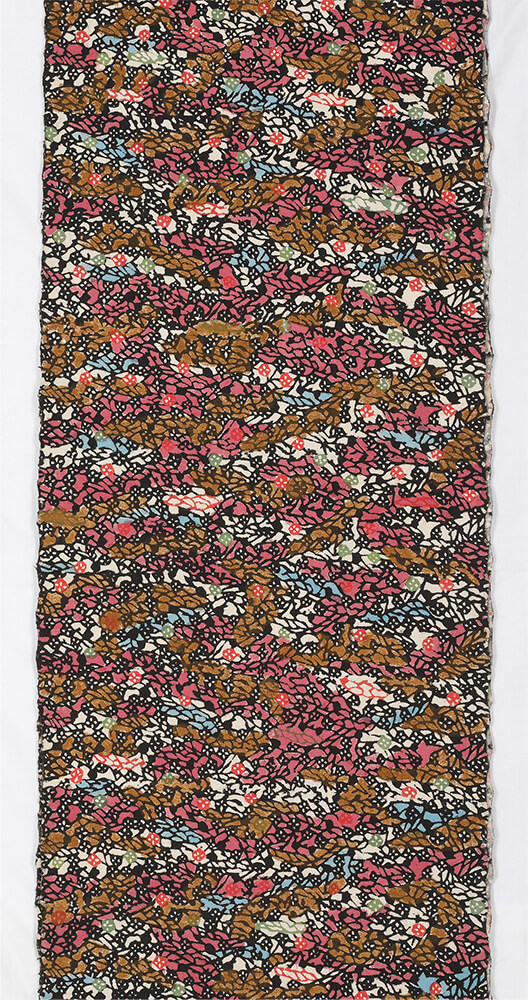
1948
Stencil-dyeing, cotton
The Japan Folk Crafts Museum
photo: Murabayashi Chikako
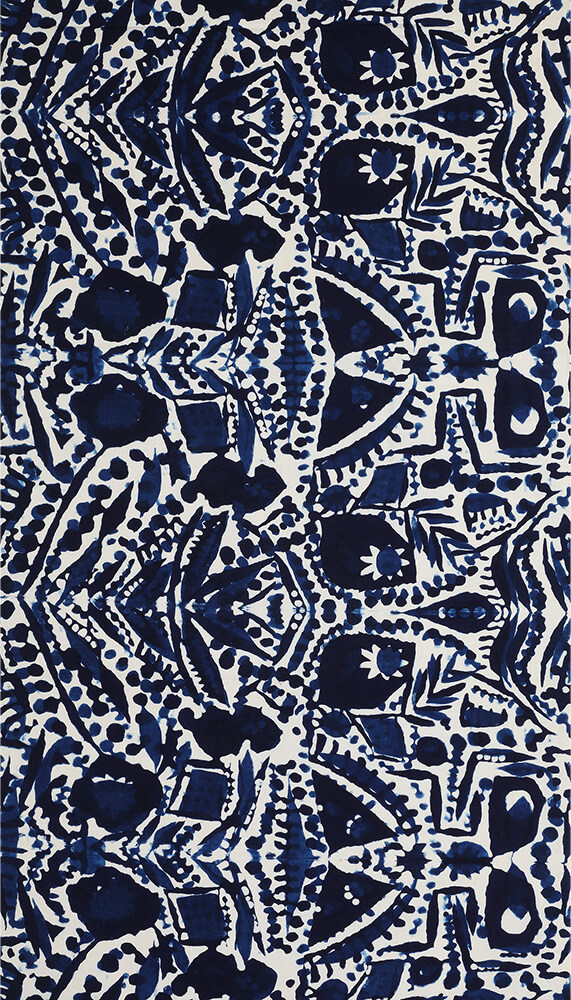
1959
Chūsen dyeing, cotton
The Japan Folk Crafts Museum
photo: Murabayashi Chikako
2 You Have to Be Filled with Excitement at All Times
In the 1980s, Yunoki feared that his own work was becoming too self-imitating, and so he sought new forms of expression such as printmaking, glass painting, and three-dimensional forms. His creative world became even richer as he delved into other areas, such as making picture books. As the demand for hand-dyed textiles used to make clothing shrank, dyed works were freed from the constraints of practical applications, and he naturally shifted to creating “works” for himself.
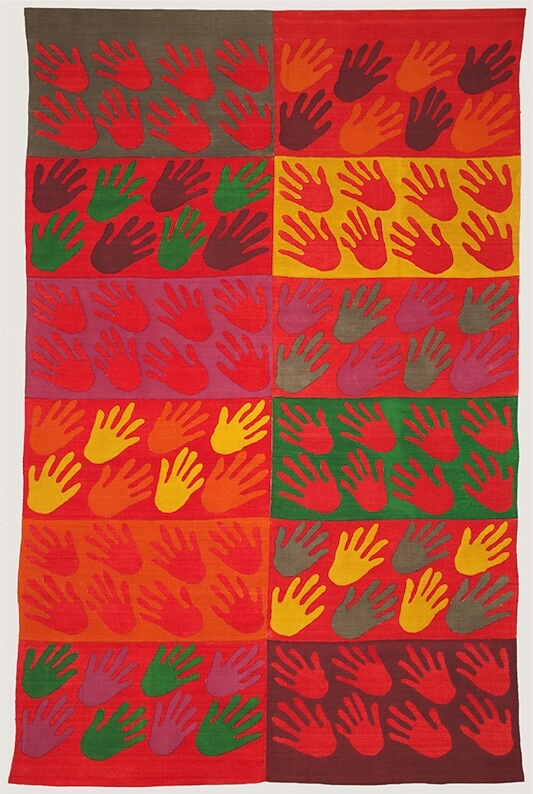
1983
Stencil-dyeing, silk
Private collection
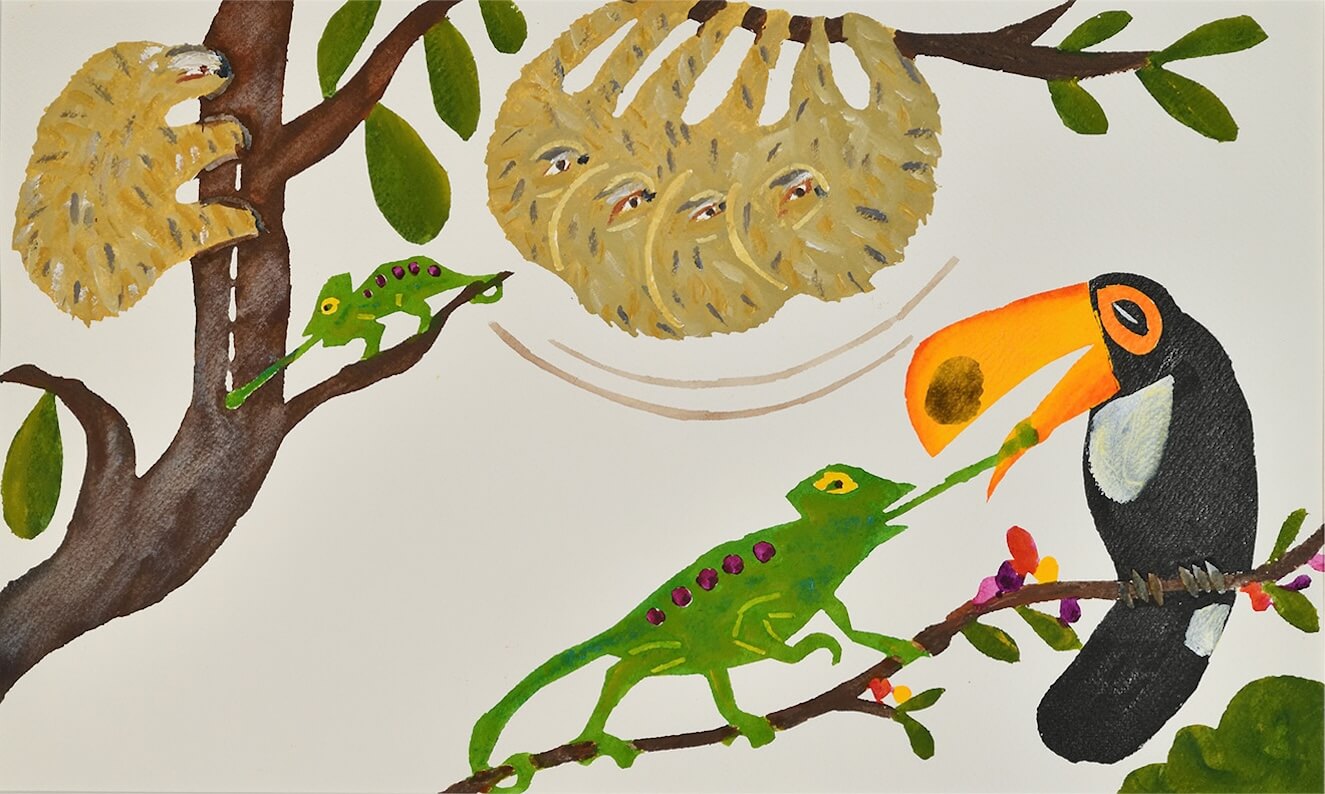
2004
Watercolor, paper
Izumi Museum of Art
3 The Joy of Travel
With the theme of “A journey through Yunoki’s life,” this section showcases works and materials related to places connected to the artist and his travels both inside and outside of Japan. There are works and materials that tell the story of each place’s connection to Yunoki: there is Okayama Prefecture, where he first encountered Mingei folk art; Nagano Prefecture, where he spent his youth; Shizuoka Prefecture, where he began to learn the art of dyeing; Iwate Prefecture, the hometown of his role model, poet Miyazawa Kenji; and Shimane Prefecture, home to the Funaki family of pottery makers, who were close friends with Yunoki. The exhibition will also show the products of his voyages to India, which had a major influence on his work, and Paris, a city that he admired.
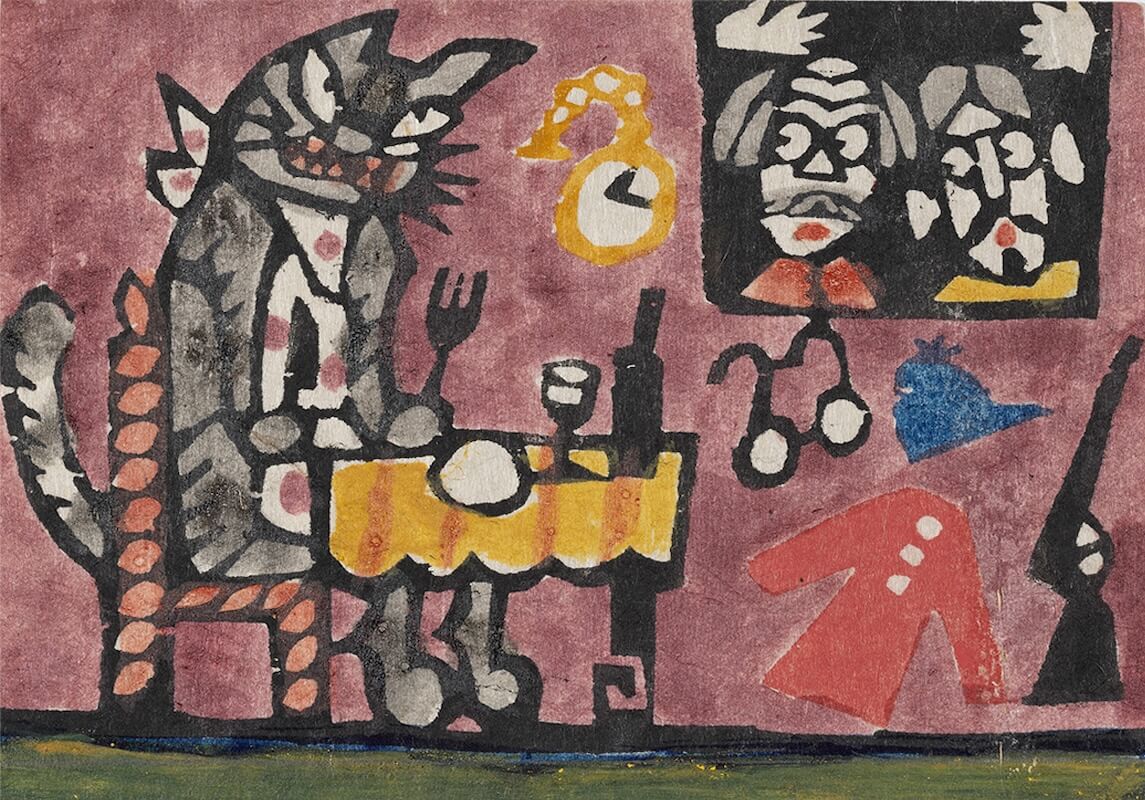
c. 1975
Stencil-dyeing, pigment, paper
Kogensha
photo: Iwane Daisuke
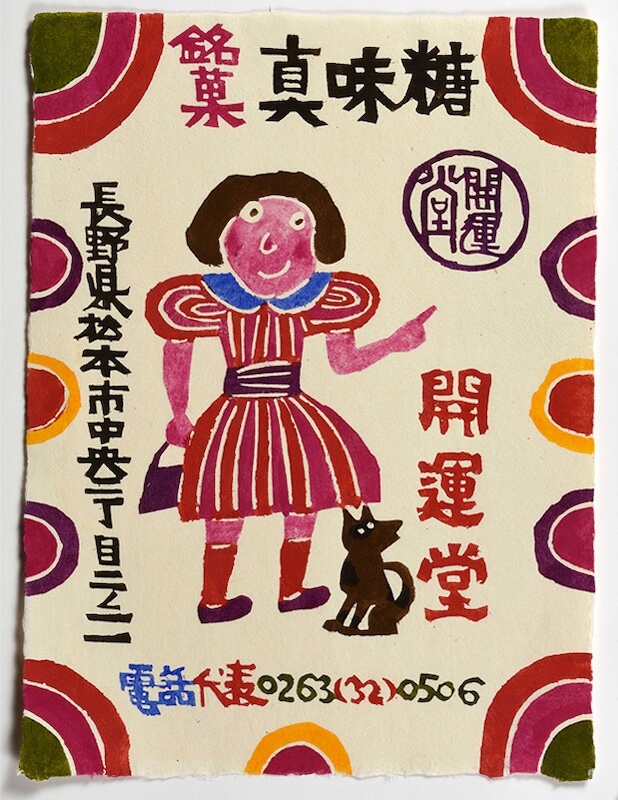
c.2000
Stencil-dyeing, paper
KAIUNDO
4 Tomorrow, Today Will Be Yesterday
“I didn't really come of age until I was 80 years old,” joked Yunoki. Yunoki’s practice actually became even broader in the 2000s. Collaborating with the younger generation provided him new inspiration. He exhibited his works at the IDÉE interior design shop and created works for commercial spaces like cafés and hotels. In times fraught with hardship—like the 2011 Great East Japan Earthquake and the pandemic that took hold in 2020—the freedom and strength of Yunoki’s works shines even stronger and brightens our lives.
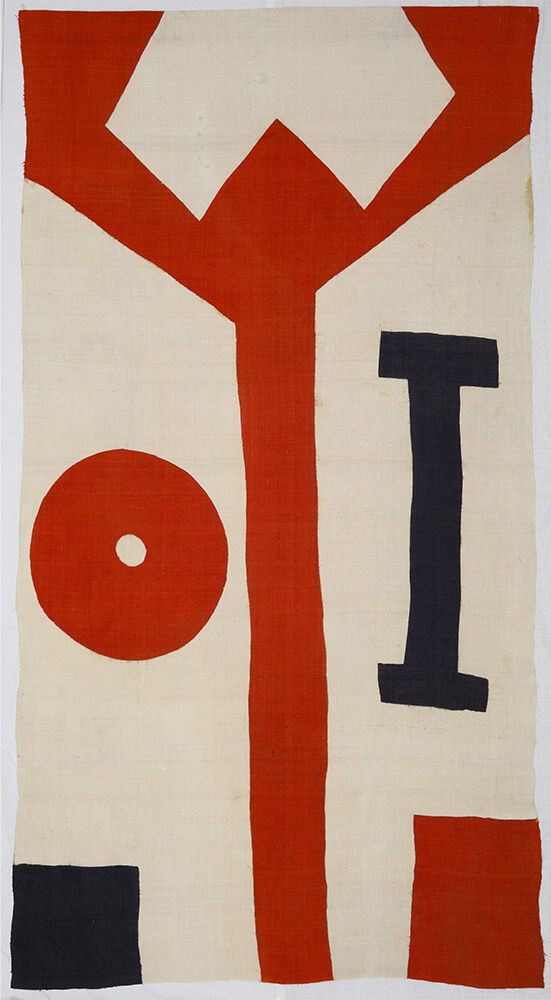
2016
Stencil-dyeing, pongee
The Japan Folk Crafts Museum
photo: Murabayashi Chikako
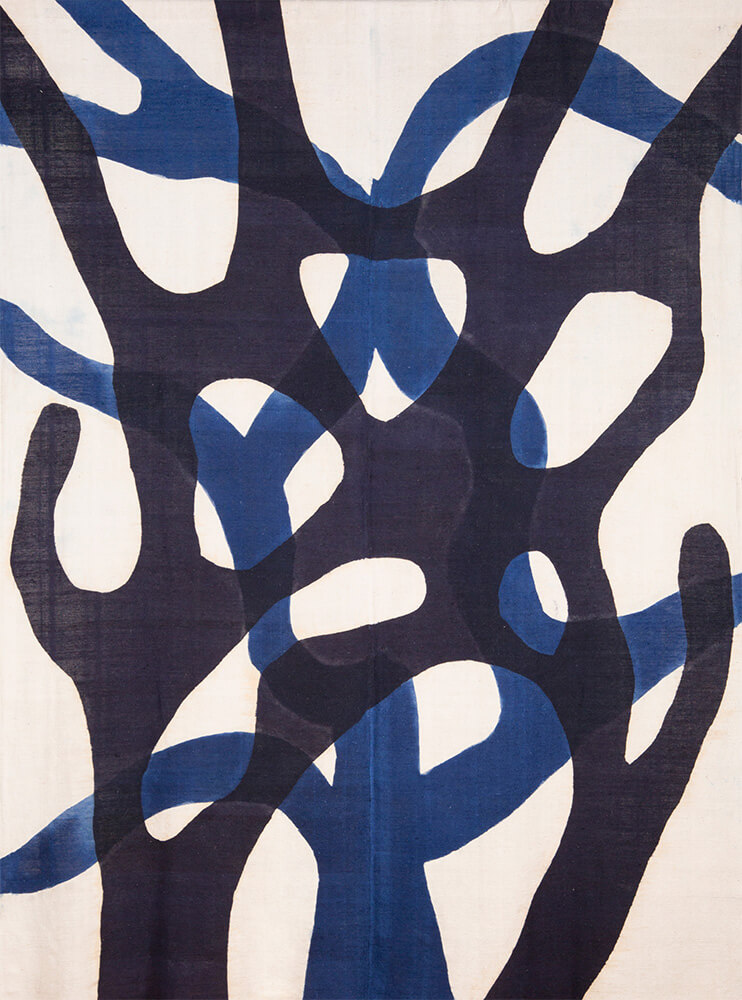
2019
Stencil-dyeing, cotton
Matsumoto City Museum of Art
photo provided by Gallery TOM




